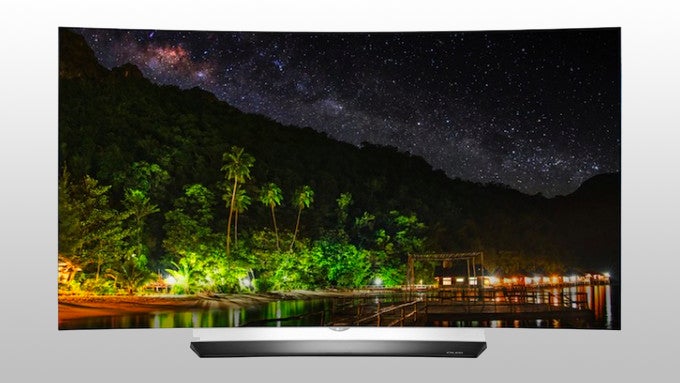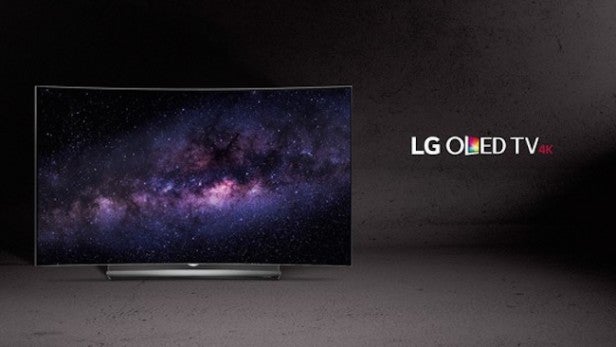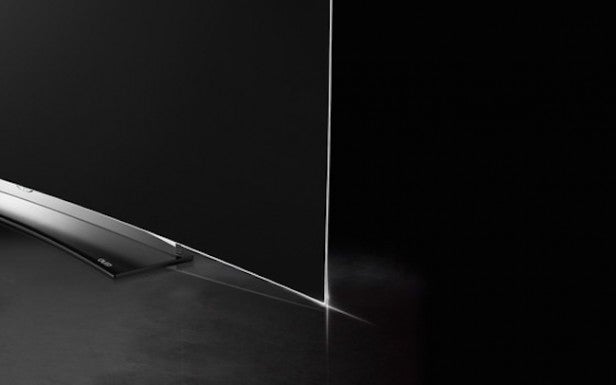LG OLED55C6V Review - Picture Quality Review
Picture Quality
OLED is back – and it's better than ever

Sections
- Page 1 LG OLED55C6V Review
- Page 2 Picture Quality Review
- Page 3 3D, Sound and Conclusions Review
LG OLED55C6V – Picture Quality
With no other brands offering serious OLED TV ranges, it would be easy for LG to just tootle along in its own little OLED world without feeling the need to change things much beyond making its OLED TVs ever cheaper.
However, the OLED55C6V proves emphatically that LG isn’t twiddling its thumbs between OLED generations, for it really is a terrific improvement on any television that’s gone before.
For instance, LG has tackled the light banding and sudden black-level loss issues of 2015. Both crop up very, very occasionally when watching HDR footage, but so rarely and so much more subtly – so long as you haven’t pushed the brightness setting too high – that they’re now a small price to pay for the huge advantages that OLED brings elsewhere.
Related: Best 4K TVs
K television displaying vibrant night sky and rock arch.” title=”LG OLED55C6″ width=”300″ height=”224″ class=”align size-medium wp-image-272084″>
LG has delivered this big improvement in light control, moreover, at the same time that it’s greatly increased the brightness it can obtain from its OLED panels. And this brightness increase comes without any compromise on the stunning black-level response that’s OLED’s trademark.
This has a transformative effect on the OLED55C6V’s handling of my nascent Ultra HD Blu-ray collection, since it essentially means you no longer have to think of OLED as performing well at the dark end of the expanded HDR light spectrum.
For while it’s true that premium LCD TVs can deliver HDR’s bright highlights far more emphatically and dazzlingly than the OLED55C6V (more on this presently), the OLED screen certainly gets bright enough with its light peaks – which hit around 550 nits in the TV’s HDR standard mode – to sell HDR’s benefits more effectively than last year’s screens.
In fact, I can readily imagine many serious AV fans feeling that the OLED55C6V sells HDR’s all-round benefits better than even the best LCD TVs, thanks to its peerless handling of the dark half of HDR’s luminance range. For as well as being capable of hitting black levels of a depth that’s simply beyond the reach of LCD TVz, the OLED55C6V also places inky black pixels right alongside punchy white or colour ones with essentially zero light pollution between the two.
The impact this degree of light control has on dark HDR scenes is mesmerising and beautiful. And since you’re not continually being distracted by the light “towers” and blooming effects seen on LCD screens, pictures are spectacularly immersive. The latter is one feature serious AV fans crave above all from a TV.
Related: Best soundbar 2016

The OLED55C6V’s extra brightness means there’s less chance for dark areas in predominantly bright HDR scenes to look like mere shadows, while OLED’s sensational black level response also proves a stellar foundation for the rest of its colour palette to “bounce off”.
The result is nothing short of an assault of colour when watching the wide colour gamuts that are part and parcel of current HDR content – and I mean that in a good way.
The range of colours is as wide and expressive as anything I’ve seen from a flat TV to date, yet alongside the stunning dynamics you’ll also see subtle tonal differences delivered with a degree of finesse not previously seen on any LG TV.
The excellent colour performance joins with the screen’s native UHD resolution, too, to enhance the sense of detail and depth in the delivery of good-quality Ultra HD Blu-ray pictures.
While I’m on the subject of HDR, it’s worth quickly comparing the set’s Dolby Vision HDR presentation with its handling of the standard HDR 10 format. Unfortunately, Dolby Vision content is extremely hard to find in the UK – in fact, the only content out there right now is Marco Polo on Netflix. Luckily, I had a clip of Pan encoded in Dolby Vision on a USB stick, and was therefore able to compare the look of this against the Pan Ultra HD Blu-ray release. The results were striking.
The most immediately obvious difference is that the Dolby Vision presentation is far less bright than LG’s HDR 10 presentation. This may be enough, I guess, to automatically turn some viewers towards the HDR 10 approach where a choice is available. However, if you look a little deeper then the Dolby Vision take on things turns out to be pretty compelling.
For starters, its colour palette is markedly richer in terms of both the saturations and subtleties it contains. Even better, there’s far more visible light and shade detail in the image’s very brightest and darkest areas than you get with LG’s HDR 10 approach. 
All in all, so long as you can get beyond the idea that HDR is simply about brightness – and you’ve probably already made this leap if you’ve bought an OLED TV rather than an LCD one -– then Dolby Vision appears to give you a much more refined and, for want of a better word, “cinematic” image.
However, for now we’ll be spending the vast majority of our time watching standard dynamic range material. To that end, the OLED55C6V is superb at handling SDR’s more limited light and colour demands. So much so that, as noted in the Setup section, I’d strongly recommend you let the TV stick to showing SDR in its native form rather than applying LG’s HDR Effect mode. The latter simply introduces forced and unbalanced colours, and “flare outs” in the brightest areas of the “upscaled” SDR picture.
The OLED55C6V fares a little better when it’s upscaling only resolution – as in, HD to UHD – rather than colour and brightness too. Pictures look detailed, without looking more noisy, even if the results aren’t quite as crisp as the upscaled images of LG’s big-name 4K rivals.
For all their many stellar and unique traits, however, the OLED55C6V’s OLED-driven pictures aren’t perfect.
The biggest issue is the very occasional appearance of a peculiar glowing effect over the very blackest parts of HDR images and, more rarely still, over detailed, darkly coloured backdrops.
The noise pretty much completely removes detail and light subtleties from the affected areas, and draws further attention to itself by breaking down into quite defined blocks and blotches that stand proud against the infinitely more refined picture information around it.
Less extreme dark scenes also sometimes suffer with subtler speckly colour noise over background areas, which can occasionally be aggressive enough to drag your eye away from the main action.
The OLED55C6V’s relative shortage of brightness also leads to a noticeable loss of subtle detail in areas of bright colours and whites, compared with the bright LCDs that are capable of getting up to around the 1,000-nit mark to which many of the Ultra HD Blu-rays released to date are mastered.
One final area in which there’s room for improvement is motion handling. As suggested in the Setup section of the review, a fair amount of judder is visible when the TV’s motion processing isn’t engaged. However, putting the default motion processing modes to use results in images that suffer with quite distracting processing side effects.
On a positive note, the OLED55C6V’s niggles don’t amount to much at all in the overall scheme of things. It delivers a really impressive step up from the previous OLED generation and it’s the first TV I’ve seen so far that actually makes dark HDR scenes look right.
How we test televisions
We test every TV we review thoroughly over an extended period of time. We use industry standard tests to compare features properly. We’ll always tell you what we find. We never, ever, accept money to review a product.

